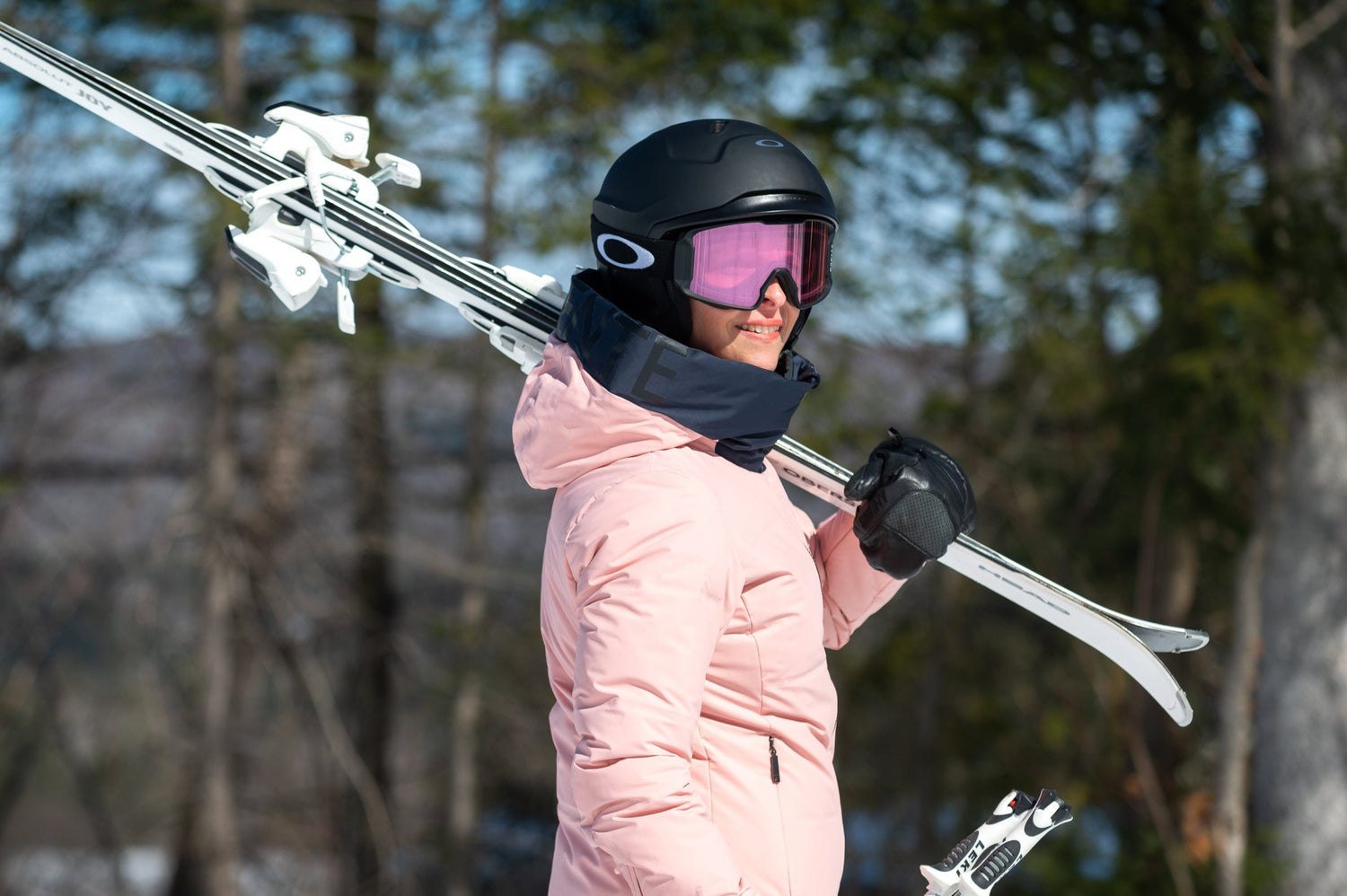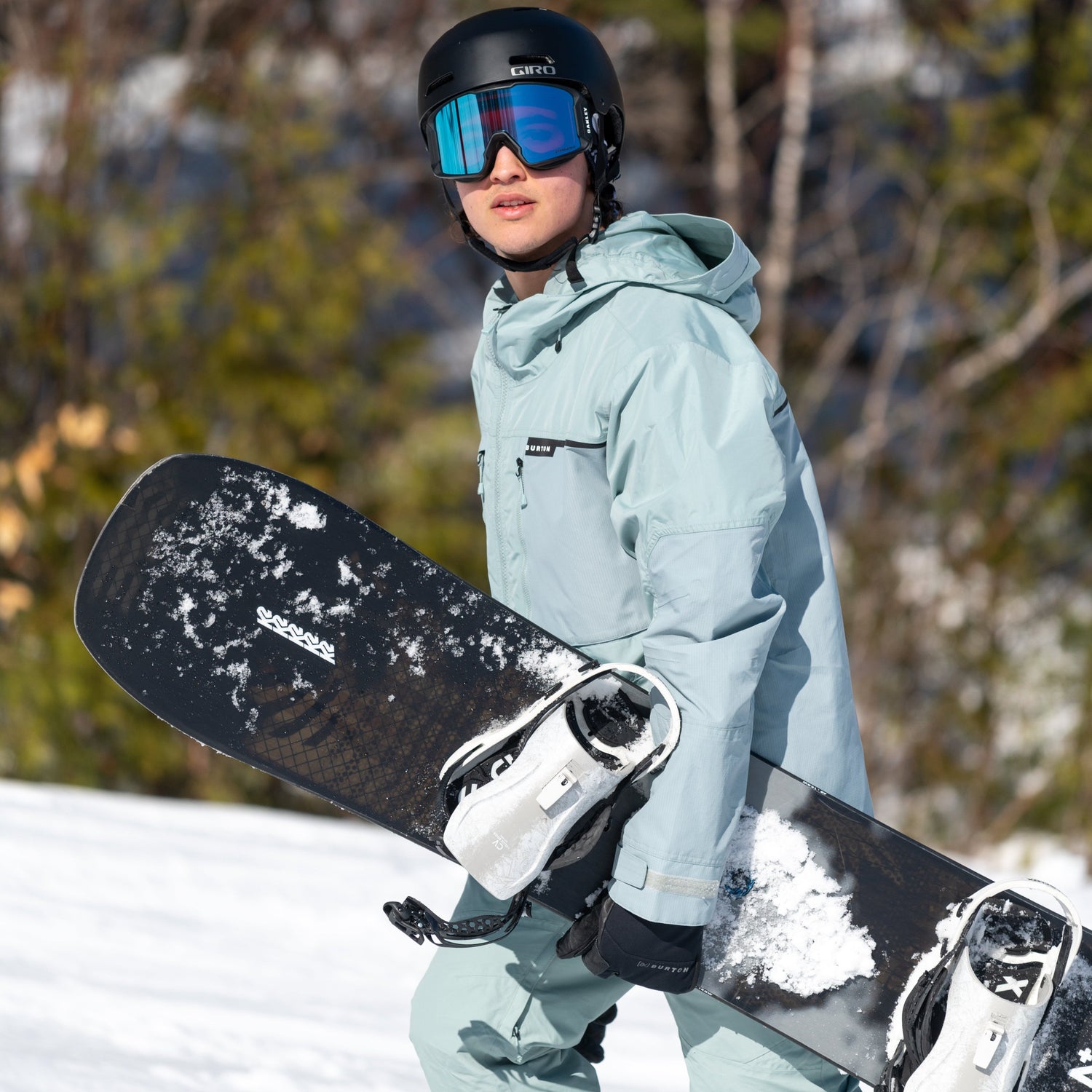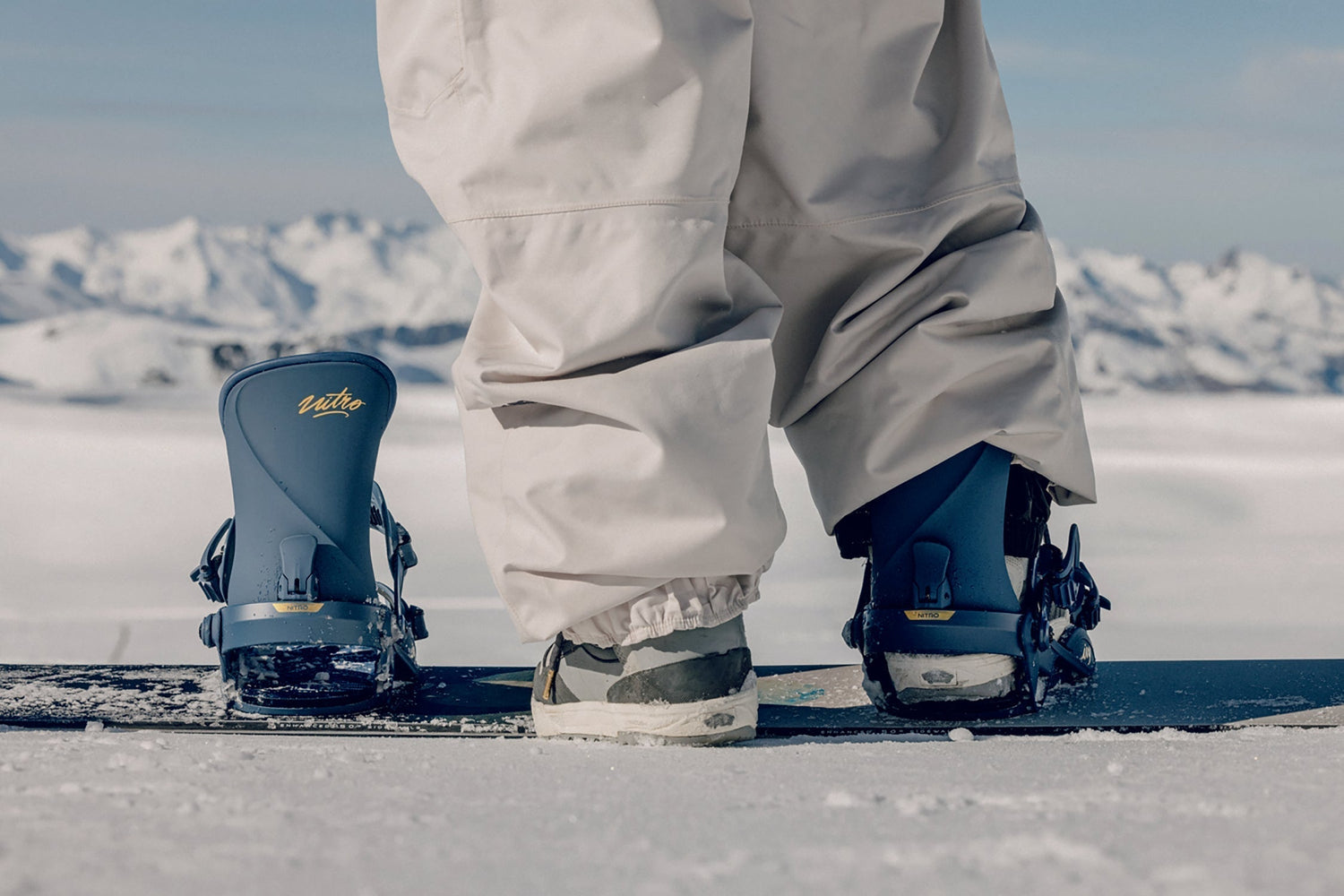1. What are the signs you need to change your snowboard boots?
Sure, wear and tear on a snowboard boot is gradual, but when you feel comfortable—too comfortable!—you need to think about changing them. Did you know that they have a lifespan of about forty to sixty snowboard outings? Just like a worn-out shoe, you’ll notice obvious creases, visible tears, and a sagging liner. To confirm that your boots will soon be taking you on their last few descents, ideally you’ll try a few different pairs with the same size and compare how they fit your foot.

2. Figure Out Your Snowboard Boot Size
Since snowboard boots use the same sizing system as shoes, it’s fairly easy to figure out the right size.
Each brand fits differently. Ideally, you should have your feet measured in a store and try on a bunch of different boots. As you try them on, the goal is for them to feel as snug as possible all around your foot without discomfort. However, just the heat of your feet alone will stretch out the boot liner by three to five millimetres in width and length. Keep this in mind if you’re hesitating between two sizes.
In addition, if you have a wider foot and are having trouble finding the right fit, be aware that some boots are available in a wide version.

3. Choose Your Snowboard Boot's Flex
The flex rating can be determined based on skill level and the type of riding you do. Unlike alpine ski boots, snowboard boots’ flex ratings aren’t determined by a number that helps guide your choice. The flex rating of snowboard boots ranges from soft to very stiff.
Flex Rating Based on Skill Level
If you’re just starting out, softer boots are great for your first few seasons. Why? Their flexibility gives you more mobility so you can get the hang of turning. They’re also more forgiving, especially when you catch an edge or make a wrong move.
Rigidity is synonymous with energy and power transfer. Stiffer boots are best suited for advanced to expert riders because they offer little mobility but provide maximum pop and support.
Flex Rating Based on Your Type of Riding
Generally speaking, when it comes to on-piste freeriding (i.e., freeriding on resort runs), we recommend a stiffer boot so they transfer power to the board as quickly as possible. For backcountry freeride enthusiasts—riders who love glades—it’s better to go with softer models for a greater range of motion and a surfier feel. The same goes for freestyle snowboarders. For them, soft boots are the clear choice. If you live for hitting jumps and riding half-pipes, burlier boots that can dampen impacts are a must.
For splitboarding, there are now specific models that have many technical features adapted to touring, such as a walk mode, protective flaps over the lacing, very grippy soles, among others. That said, you can use any snowboard boot for touring.
To learn more about splitboard gear, check out our article What Do You Need for a Splitboard Season?
Step On® Snowboard Boots
Step On® snowboard boots are only compatible with bindings bearing the same name. This quick-in system allows the boot to simply slide into the binding from heel to toe without using straps and traditional ratchet buckles. Step On® boot models have different flex ratings.
Step On® technology was introduced to the market by Burton and is now available from DC and Nitro. K2 also manufactures Clicker X bindings, which work the same way.
To learn more about Step On snowboard bindings, watch our Pro Tips video: How to Use Burton Step On Bindings.

4. Choose the Type of Lacing
Traditional Lacing
As the years go by, lace-up boots are waning in popularity on the shelves, especially for women’s snowboard boots. Lace-up models offer a softer, more progressive flex.
Boots with the BOA System
The BOA system can be found on most models, especially those for women and kids. This steel and Teflon cable, which creates an exoskeleton in the boot, allows for a simple, even, effective, precise fit. The result? More torsional rigidity.

5. Find the Perfect Fit
To achieve an extremely precise fit, snowboard boot liners are heat-mouldable. An in-store specialist will know how to mould them to your feet. A well-fitting boot gives you maximum control over your board.




